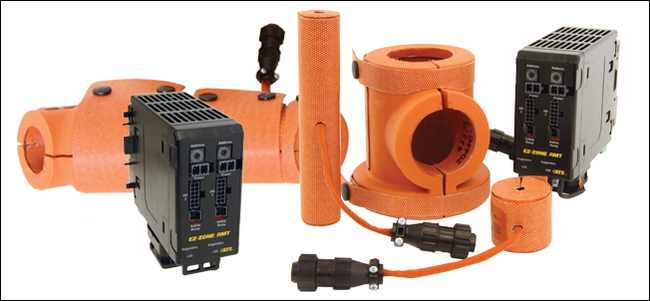In the past, thermal systems always had trade-offs that often made the “ideal” system out of reach. Whether budgetary concerns limit the number of temperature sensors, tight space requirements restrict the number of zones or the technology hampers how precise the heating systems are, these systems are often curated with compromise. Here, Sean Wilkinson, Product Manager at industrial technology company Watlow, explores how adaptive thermal systems (ATS) are designed to provide companies with the tools to build the heating systems they need, without forcing compromise.
A great heating system needs a great controller. Of course, better controllers are only worth the investment if it’s possible to achieve better control throughout the system. Improved control requires more sensors, which can be a costly proposition.
But there are ways to get around high costs. High temperature coefficient resistance (TCR) materials respond to temperature changes with a change in resistance. By measuring that change, it’s possible to determine the temperature at that location. Building heaters out of high TCR materials adds a sensing capability, adding measurements to places where they were previously impossible due to space or cost requirements.
Likewise, integrated thermocouple heater (TCH) junction temperature control turns heater power leads into a thermocouple junction. The voltage at this junction varies consistently with the surrounding temperature, so measuring it provides a spot measurement of the temperature at that location. Together, these two technologies offer expanded sensing options without additional wiring or extra controllers.

Multi-loop control and sensing
Adopting high TCR materials or TCH junction temperature control can lead to an abundance of available data, which can be used to fine-tune processes and operating costs. However, in other systems, the increased capabilities would lead to an exponential increase in necessary wiring, which may not be possible due to space or budgetary requirements.
Watlow, which manufactures industrial heating technology, has decades of experience with thermal systems to help engineers and designers to incorporate ATS technology into a variety of industrial processes and products. Watlow’s multi-loop control uses a multiplex wiring scheme that enables as many as ten times the number of zones per wire when combined with high TCR materials. Increasing zone density allows for unparalleled sensing and control without creating budgetary issues.
Additionally, the company developed a standardised harness for the ATS system, which reduces the complexity of installations and the number of design passes needed before installation can begin.
The power of modularity
ATS’ true power comes from the fact that each system component is beneficial on its own, but together, they can transform a heating process from end to end. Whether designing a system from scratch or redesigning one that has not quite lived up to expectations, ATS brings something new to the table.
Many thermal system design projects reinvent the wheel at each stage of the process. ATS’s modular “off-the-shelf” approach to many components not only lowers cost, but also reduces the number of design iterations needed before implementation to reduce lead time.
However, it is essential to remember that ATS is still customised to the exact needs of each application. Due to that, it represents the best of both worlds. A system that can deliver the accurate temperature control needed for modern manufacturing while avoiding compromises related to cost, space, sensor density and heating control accuracy that other systems face.
ATS is a suite of solutions that can be tailored to specific engineering challenges, and without compromise as previously experienced. Now, ATS’s controllers, heating elements and sensors can help companies achieve breakthroughs in cost, efficiency, precision and data production, which can be used to help drive the next generation of growth within various manufacturing applications.
About Watlow:
Founded in 1922, Watlow strives to be the leading provider of thermal solutions for the world’s most demanding applications. Utilizing our advanced technology, leading companies apply our thermal systems which are ideally suited for vital applications such as clean and environmentally-friendly energy systems and processes, front-end semiconductor processing and lifesaving medical and clinical equipment. Since 1922, Watlow has grown in product capability, market experience and global reach. The company holds more than 1,100 patents and employs 6,000 team members working in 12 manufacturing facilities and five advanced technology and development centers in the United States, Mexico, Europe and Asia. Watlow covers 95 countries through sales and distribution offices around the world. The company continues to grow, while the commitment remains the same – to provide its customers with superior products and services for their individual needs.
